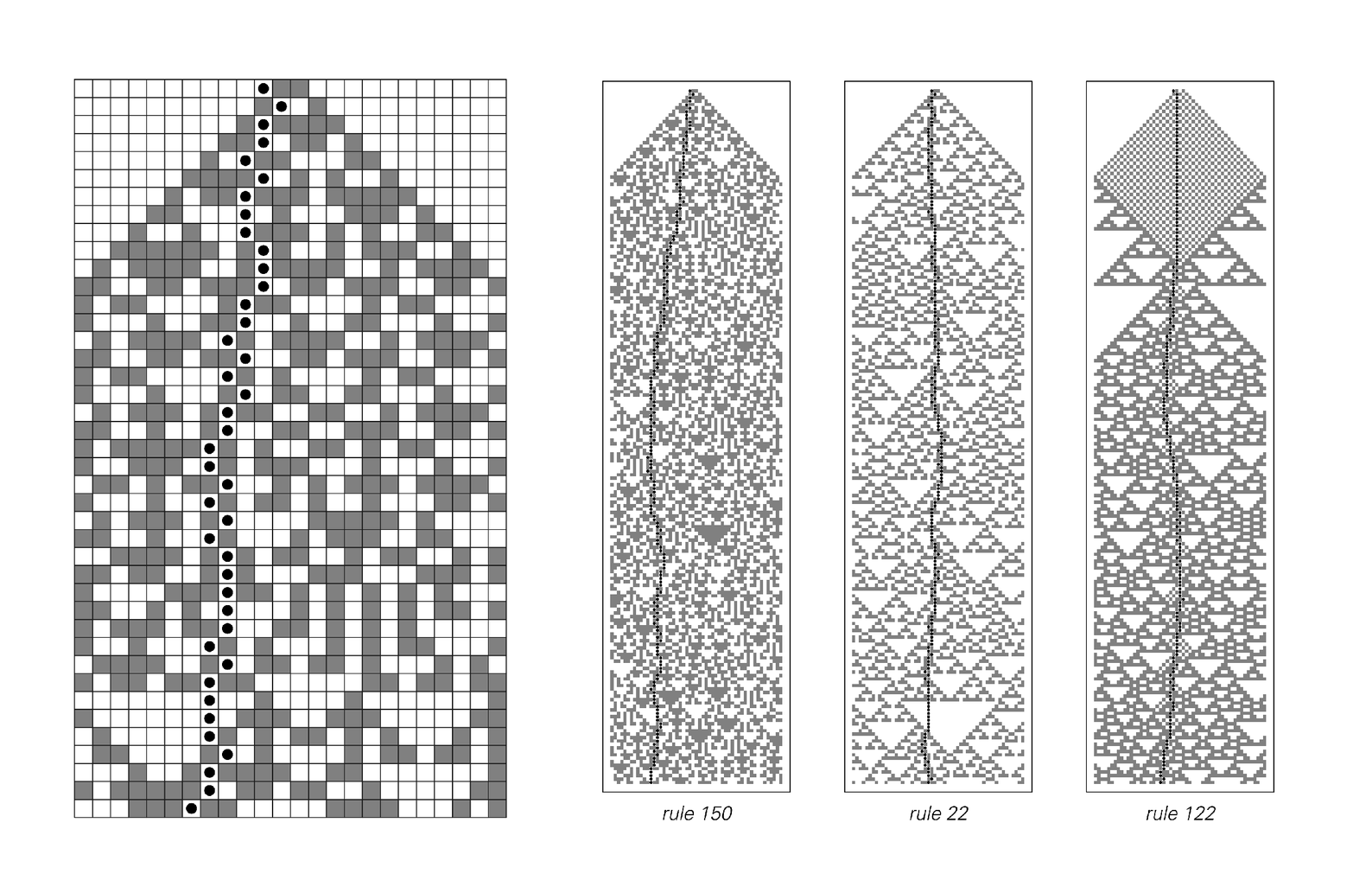There are many factors which affect the details of displacements and vibrations in a solid. But as a rough approximation one can perhaps assume that each element of a solid is either displaced or not, and that the displacements of neighboring elements interact by some definite rule—say a simple cellular automaton rule.
The pictures below show the behavior that one gets with a simple model of this kind. And even though there is no explicit randomness inserted into the model in any way, the paths of the cracks that emerge nevertheless appear to be quite random.
There are certainly many aspects of real materials that this model does not even come close to capturing. But I nevertheless suspect that even when much more realistic models for specific materials are used, the fundamental mechanisms responsible for randomness will still be very much the same as in the extremely simple model shown here.

A very simple cellular automaton model for fracture. At each step, the color of each cell, which roughly represents the displacement of an element of the solid, is updated according to a cellular automaton rule. The black dot, representing the location of a crack, moves from one cell to another based on the displacements of neighboring cells, at each step setting the cell it reaches to be white. Even though no randomness is inserted from outside, the paths of the cracks that emerge from this model nevertheless appear to a large extent random. There is some evidence from physical experiments that dislocations around cracks can form patterns that look similar to the gray and white backgrounds above.



